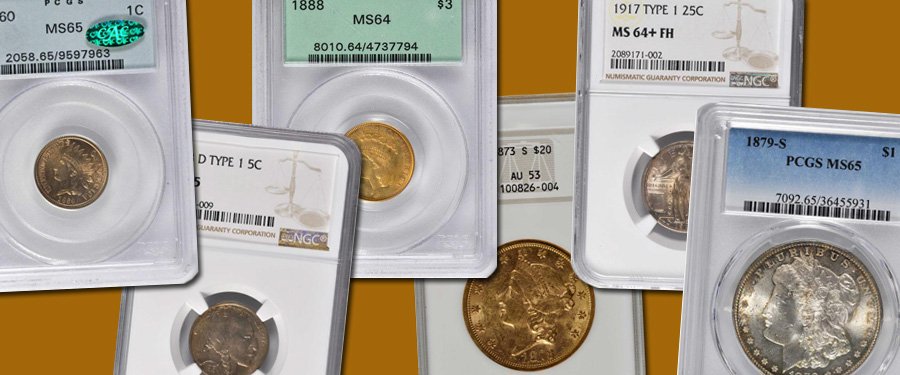
A
reader recently asked whether I liked third-party grading services such as PCGS
and NGC. This furnishes an opportunity for some comments.
For my
own collection (kept in a bank vault) if a token, medal, or piece of
paper money is purchased “raw” I keep it that way. I can then touch it and
appreciate it more (although in recent years my appreciation has been through
images that I have on my computer). However, when I consign or sell an item I
have it certified. The reason is simple: While experienced long-term
numismatists do not need certification, for the vast majority of buyers who
have entered the hobby in recent years, certification makes it unnecessary for
them to know even the slightest thing about grading or authenticity.
Grading
does vary, often when the same items are resubmitted, but that is generally
ignored. Recently a long-time client wrote me a warm letter of thanks, saying
that all of the AU coins he bought from me years ago are now certified as Mint
State.
Here
are some advantages of certification:
1.
Buyers with little or no knowledge of grading or authenticity will bid
strongly, whereas if the items were not certified many would not bid at all.
For anyone selling valuable items, certification vastly increases the number of
bidders and buyers.
2. With
few exceptions, certified holders do not mention sharpness of strike.
Accordingly, a variety that usually is found weakly struck (the 1926-D Buffalo
nickel is a poster example), a weak coin will attract many bids as buyers are
not aware of sharpness (unless they happen to read a book such as my
Whitman Guide Book of Buffalo and Jefferson Nickels). However,
most modern buyers do not feel that building a working reference library is
worthwhile.
3. The
next advantage is a corollary to the above. A well-informed buyer can
cherrypick a sharply struck rarity without having to pay more than for a weak
coin! Opportunities abound!
4. Less
attractive coins sell more easily if certified. All sorts of coins that used to
be hard for collectors and dealers to sell now sell readily, especially at a
discount. A poster example of a coin that is usually very unattractive is a
toned 1923-S Monroe Doctrine commemorative half dollar, which is also usually
weakly struck.
As to disadvantages,
they are more philosophical than anything else. Mainly, numismatists who only
rely on certified coins miss some of the appreciation of the art, science, and
romance of coins, tokens, medals, and paper money. As a result, their longevity
tends to be just a year or two or three. In contrast, a numismatist who seeks
information, builds a modest working library of interesting and informative
books and reads them, and who attends coin shows and talks in depth with
collectors and dealers is apt to be reading my messages ten years from now!





